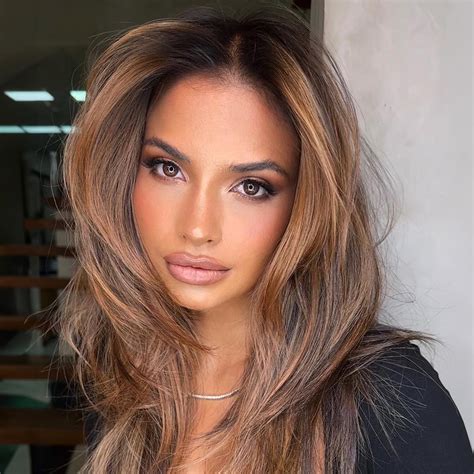What is Balayage Hair Color?
Balayage is a French hair coloring technique that creates natural-looking highlights. It involves hand-painting lightener onto the hair in strategic places to achieve a sun-kissed effect. Unlike traditional foiling or ombré, balayage allows for a more gradual and customizable transition of color.

Why Choose Balayage?
- Natural-looking results: Balayage mimics the way hair naturally lightens in the sun.
- Low maintenance: The gradual blending of colors means fewer touch-ups are required.
- Versatile: Balayage can be customized to suit any hair color and length.
- Trendy: Balayage has been gaining popularity in recent years, making it a stylish choice.
Types of Balayage Hair Color
- Traditional Balayage: Involves painting lightener freehand onto the surface of the hair.
- Reverse Balayage: Lighter strands are painted underneath darker hair, creating a shadow root effect.
- Sombré Balayage: A soft blend of balayage and ombré, featuring a subtle transition between lighter and darker shades.
- Foilayage: Combines balayage with traditional foiling to create more defined highlights.
How to Get Balayage Hair Color
- Choose your stylist: Find an experienced hairstylist who specializes in balayage.
- Discuss your desired color: Discuss the placement, tone, and intensity of the highlights you want.
- Prepare your hair: Wash and condition your hair before the appointment to remove any product residue.
- Section your hair: The stylist will section your hair into smaller sections for easier application.
- Apply the lightener: The stylist will use a brush to hand-paint the lightener onto your hair, focusing on the areas you want to highlight.
- Develop and rinse: The lightener will be left on your hair for a specific amount of time before it is rinsed out.
- Tone and style: After rinsing, your stylist may apply a toner to enhance the color and add warmth.
- Enhances natural hair color: Balayage adds depth and dimension to your existing hair color.
- Frames the face: Strategically placed highlights can draw attention to your eyes and cheekbones.
- Reduces brassiness: The gradual blending of colors helps prevent brassy or orange tones.
- Complements all skin tones: Balayage can be customized to suit any skin tone.
- Using too much lightener: This can lead to hair damage or discoloration.
- Overlapping the highlights: The highlights should be blended seamlessly, avoiding any harsh lines.
- Ignoring hair porosity: Porous hair may require more lightener or processing time.
- Not toning: Toning helps enhance the color and prevent fading.
- Applying heat too often: Heat tools can damage balayaged hair, so use them sparingly.
- Air-dry: Avoid using heat styling tools whenever possible to minimize damage.
- Use a wide-toothed comb: This will prevent breakage and keep your highlights looking natural.
- Apply leave-in conditioner: Use a leave-in conditioner to hydrate and protect your hair.
- Add curls or waves: Soft curls or waves can enhance the dimension of your balayage color.
- Experiment with braids: Braids can create interesting patterns and showcase your highlights.
- How long does balayage hair color last? With proper care, balayage can last for several months.
- What are the best products for balayaged hair? Use sulfate-free shampoos and conditioners, deep repairing masks, and leave-in conditioners.
- Why is my balayage turning brassy? Brassiness can occur due to sun exposure, heat styling, or chemical treatments.
- Can I get balayage on short hair? Yes, balayage can be customized for short hairstyles, creating subtle or more dramatic highlights.
[Insert a table with 10 different balayage hair color ideas and their corresponding images]
Balayage hair color is a versatile and flattering option that can enhance your natural hair and create a stylish look. By following these tips and consulting with an experienced hairstylist, you can achieve the perfect balayage for your hair.
